Lyft's Marketing Automation Platform Symphony
Customer Acquisition Efficiency Issue: How can advertising campaigns achieve higher returns with less money and fewer people?
Specifically, Lyft's advertising campaigns need to address the following characteristics:
- Manage location-based campaigns
- Data-driven growth: growth must be scalable, measurable, and predictable
- Support Lyft's unique growth model, as shown below:
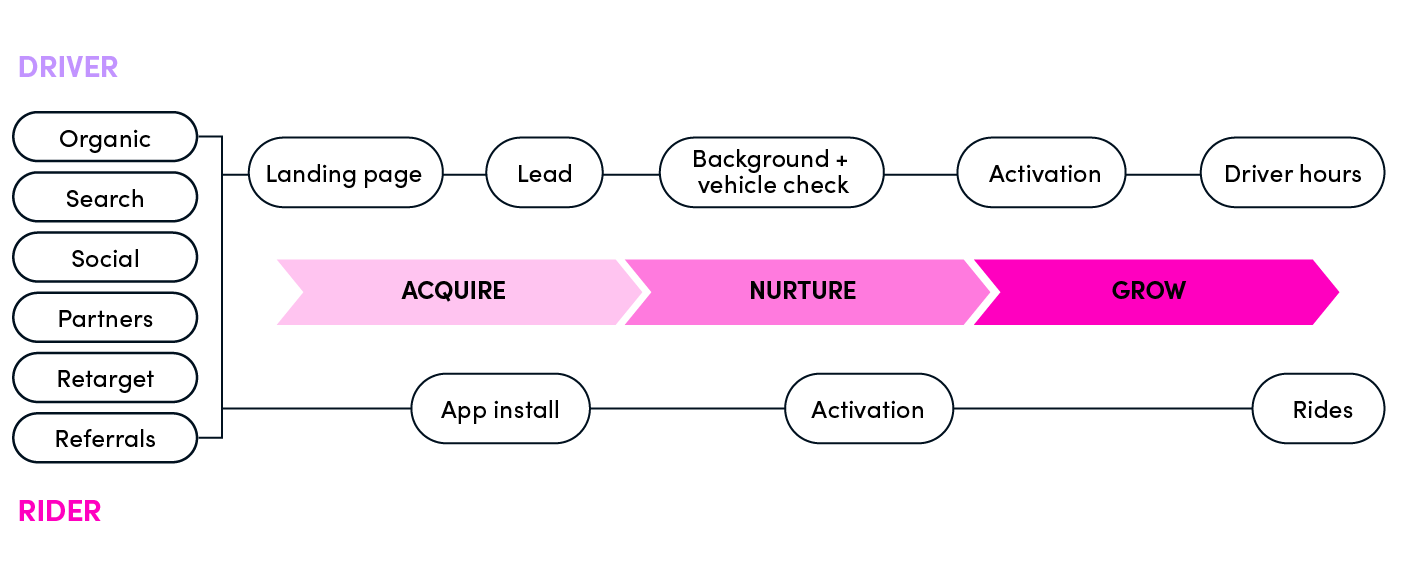
The main challenge is the difficulty of scaling management across various aspects of regional marketing, including ad bidding, budgeting, creative assets, incentives, audience selection, testing, and more. The following image depicts a day in the life of a marketer:

We can see that "execution" takes up most of the time, while less time is spent on the more important tasks of "analysis and decision-making." Scaling means reducing complex operations and allowing marketers to focus on analysis and decision-making.
Solution: Automation
To reduce costs and improve the efficiency of experimentation, it is necessary to:
- Predict whether new users are interested in the product
- Optimize across multiple channels and effectively evaluate and allocate budgets
- Conveniently manage thousands of campaigns
Data is enhanced through Lyft's Amundsen system using reinforcement learning.
The automation components include:
- Updating bid keywords
- Disabling underperforming creative assets
- Adjusting referral values based on market changes
- Identifying high-value user segments
- Sharing strategies across multiple campaigns
Architecture
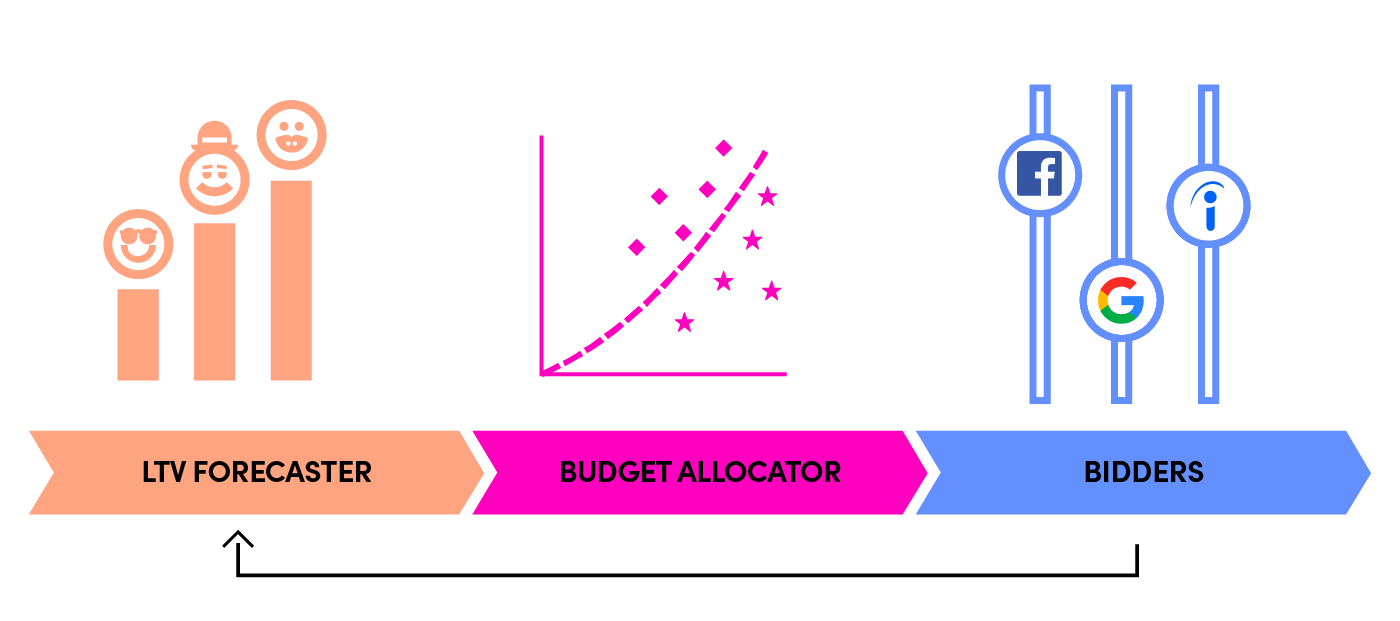
Technology stack: Apache Hive, Presto, ML platform, Airflow, 3rd-party APIs, UI.
Specific Component Modules
LTV Prediction Module
The lifetime value (LTV) of users is an important metric for evaluating channels, and the budget is determined by both LTV and the price we are willing to pay for customer acquisition in that region.
Our understanding of new users is limited, but as interactions increase, the historical data provided will more accurately predict outcomes.
Initial feature values:

As historical interaction records accumulate, the predictions become more accurate:
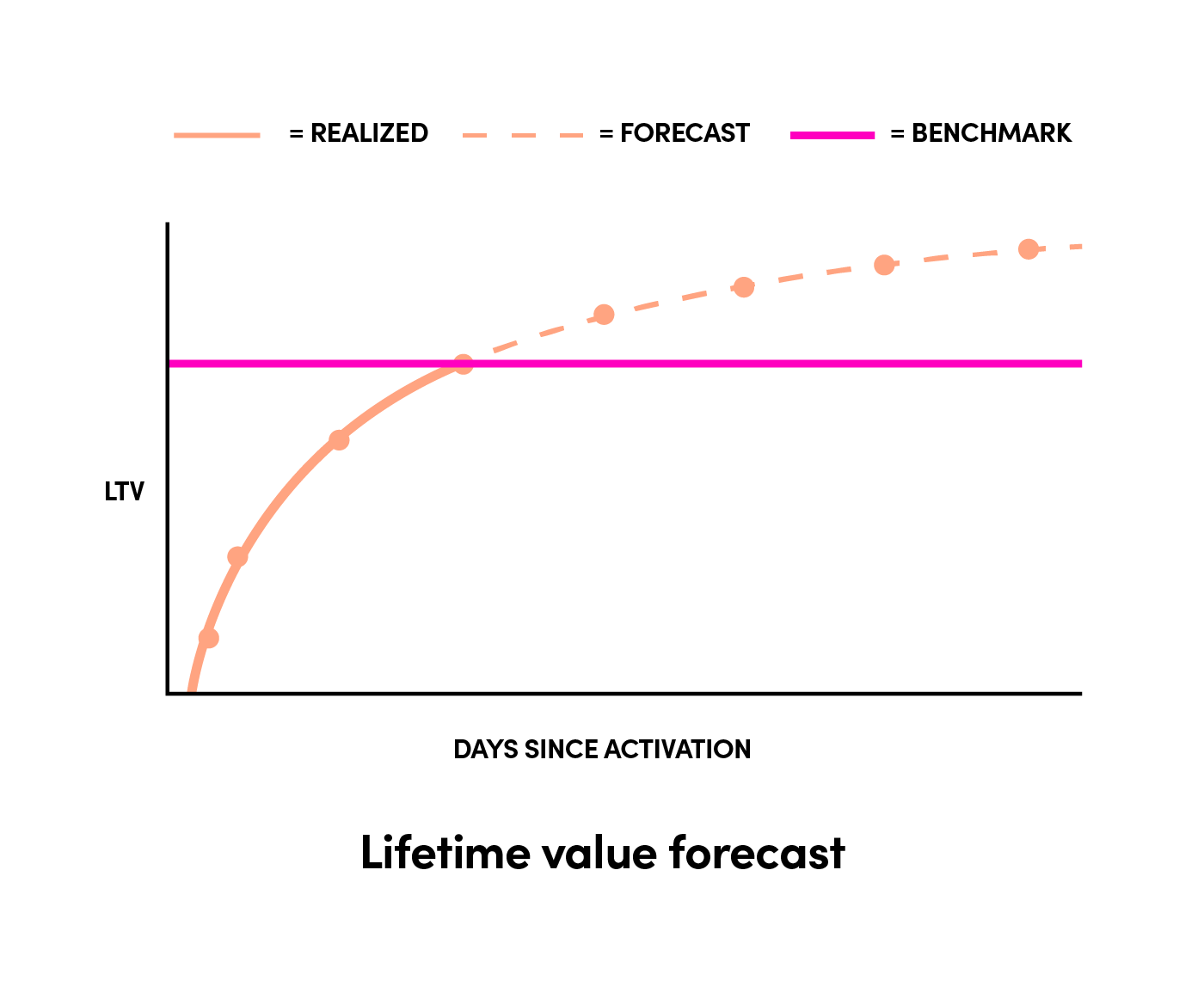
Budget Allocation Module
Once LTV is established, the next step is to set the budget based on pricing. A curve of the form LTV = a * (spend)^b is fitted, along with similar parameter curves in the surrounding range. Achieving a global optimum requires some randomness.
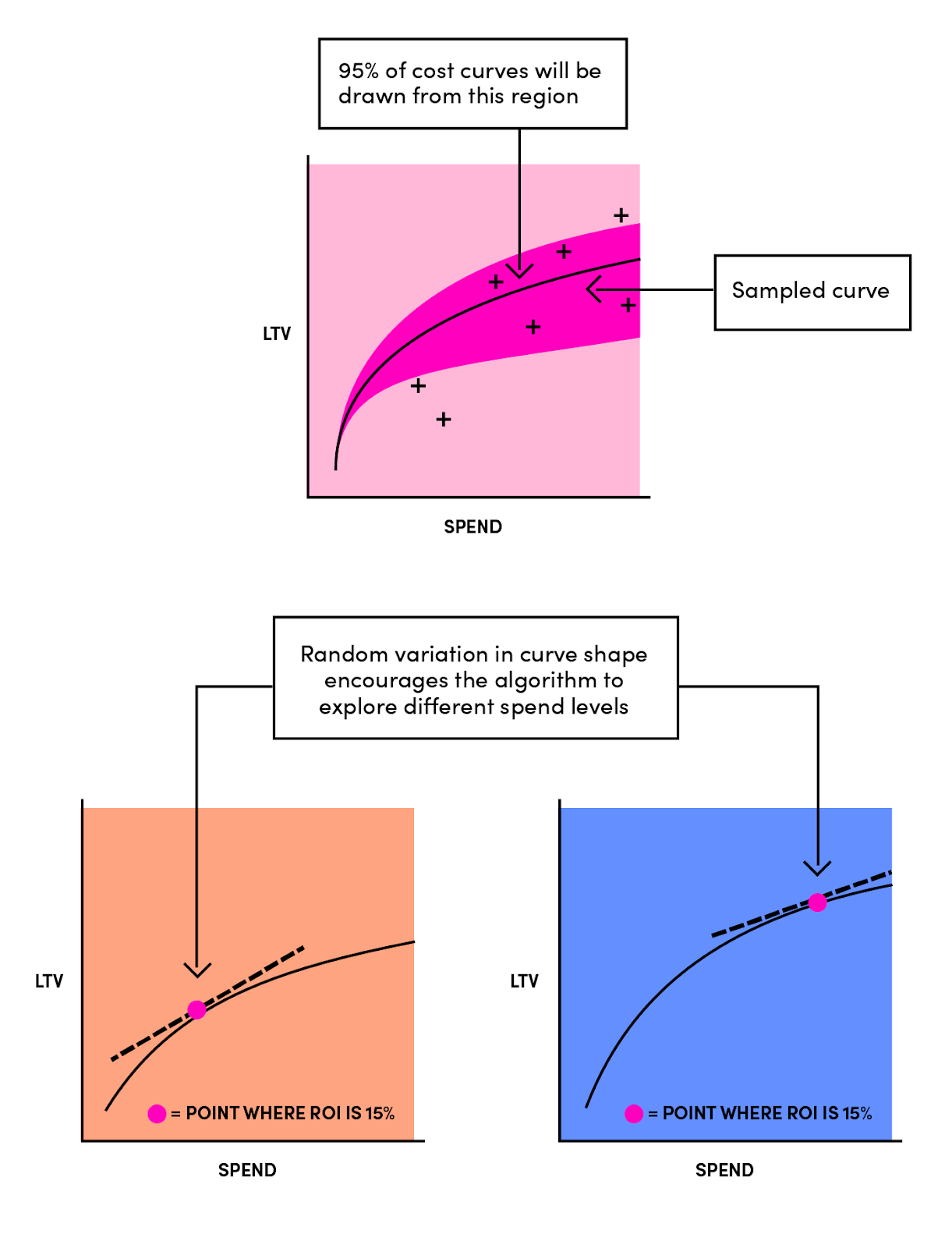
Delivery Module
This module is divided into two parts: the parameter tuner and the executor. The tuner sets specific parameters based on pricing for each channel, while the executor applies these parameters to the respective channels.
There are many popular delivery strategies that are common across various channels:
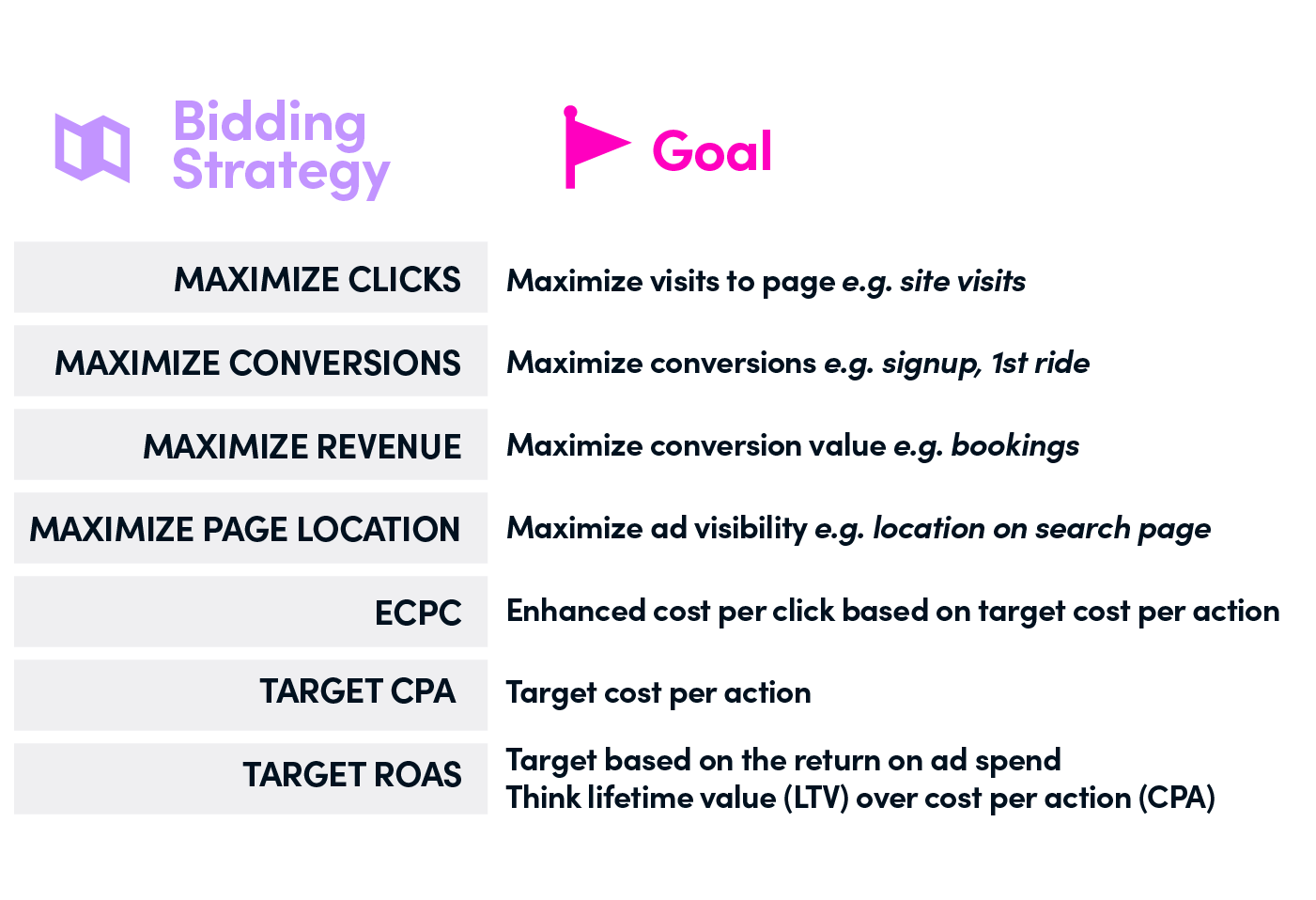
Conclusion
It is essential to recognize the importance of human experience within the system; otherwise, it results in garbage in, garbage out. When people are liberated from tedious delivery tasks and can focus on understanding users, channels, and the messages they need to convey to their audience, they can achieve better campaign results—spending less time to achieve higher ROI.